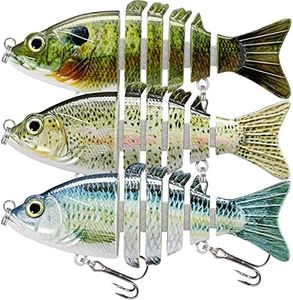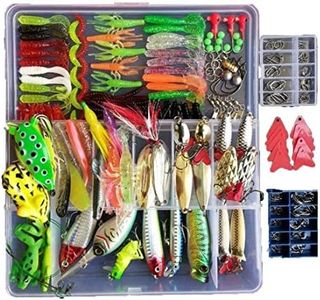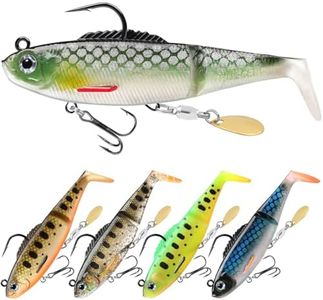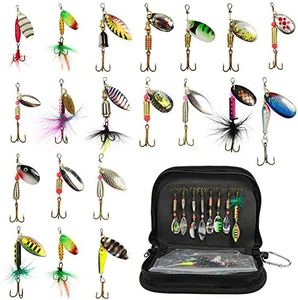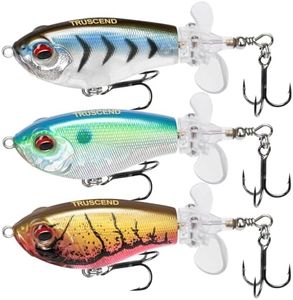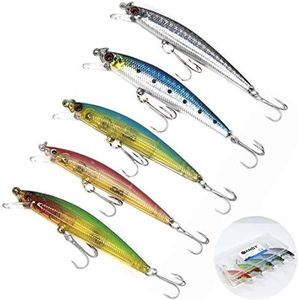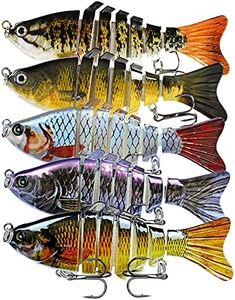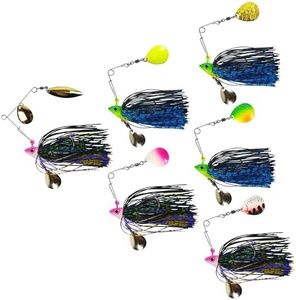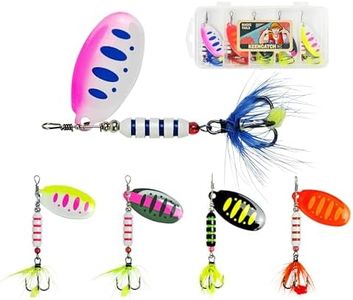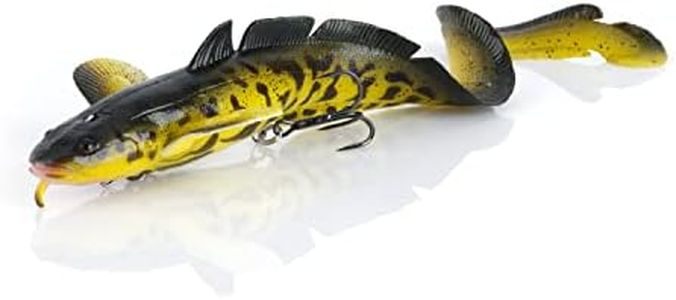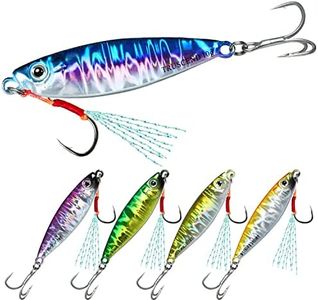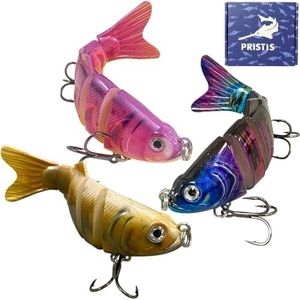We Use CookiesWe use cookies to enhance the security, performance,
functionality and for analytical and promotional activities. By continuing to browse this site you
are agreeing to our privacy policy
10 Best Pike Lures
From leading brands and best sellers available on the web.Buying Guide for the Best Pike Lures
Choosing the right pike lure can make a big difference in your fishing success. Pike are predatory fish that are drawn to lures that mimic their natural prey, so your choice should depend on the water conditions, time of year, and your own fishing style. Understanding different lure types and their features will help you select something that attracts more pike and suits your method of fishing.Lure TypeThe type of lure you choose—such as spoons, spinners, soft plastics, jerkbaits, or crankbaits—has a big influence on your presentation and effectiveness. Spoons wobble and flash, resembling injured fish, while spinners use vibration and shine to draw attention. Soft plastics can imitate prey with lifelike movement, while jerkbaits and crankbaits offer unique darting and diving actions. Consider what type of prey pike are feeding on and how you like to fish: if you enjoy fast retrieves and covering water, spoons and spinners are good; for a more natural appearance or slower technique, soft plastics and jerkbaits can be ideal.
Lure SizeSize refers to the overall length and body mass of the lure. Larger lures (generally four inches or more) tend to attract big pike, while smaller ones may work better when pike are feeding on smaller bait or in pressured waters. In cold water or early season, downsizing might trigger more bites; in summer or when big fish are active, upsizing your lure can help target trophy pike. Match the size of your lure to the size of local prey fish and the general aggressiveness of pike during the season.
Color and PatternColor and pattern play a major role in visibility and triggering strikes. Bright colors or flashy finishes work well in murky water or overcast conditions, while natural colors and subtle patterns are better for clear water or pressured fish. If you are unsure, start with something that matches the local baitfish, then adjust based on clarity and pike activity: for example, use silver or white in clear water, and chartreuse or firetiger in stained water.
WeightWeight determines how deep a lure sinks and how it performs in current or wind. Heavier lures cast further and sink faster, making them good for deep water or windy conditions. Lighter lures have a slower fall and work better in shallow water or when you want a gentle presentation. Your choice should match the depth you wish to target and how fast you want your lure to move.
ActionAction refers to the movement style of the lure when retrieved. Some lures wiggle tightly, while others sway or dart widely. Flashy or erratic action can provoke strikes from aggressive pike, while subtle action can tempt wary fish. Experiment with different actions to find what works best: start with a standard retrieve and change speed or rhythm as needed.
Hook StrengthPike have strong jaws and sharp teeth, so lures must have durable, sharp hooks. Thin or weak hooks can bend out or break during the fight. Look for lures with strong, quality treble or single hooks, especially if you plan to catch and release. If in doubt, upgrade to a higher-quality hook to ensure you don’t lose your catch.
